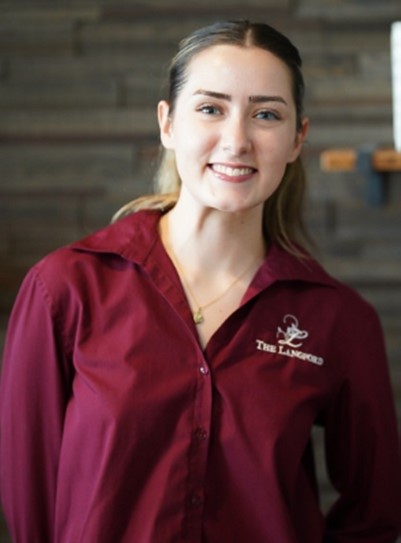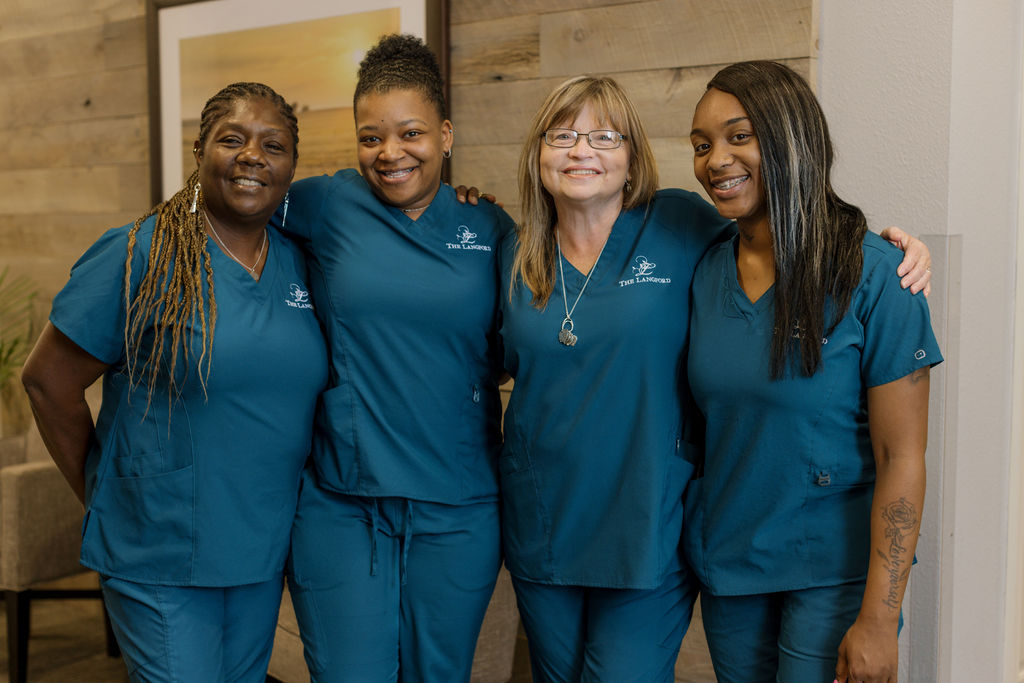About
Independent Living
Gallery
Contact


Nationally, senior living is an industry where high turnover among employees is the norm, skyrocketing in the years that followed the pandemic with only the most remarkable communities getting out from under this trend. The Langford in College Station is one of those exceptional communities who maintains a steady team of dedicated workers with an average turnover rate that falls well below the average. Even more impressive, the community boasts a full team with no vacancies for employment. “While other employers are begging for applicants, we are inviting interested candidates to put their name on a waitlist to work at The Langford,” explained Beth Buell, Assisted Living Director. The Langford is one of three MRC Communities in this condition, Crestview and Creekside are also nurturing waitlists for employment.
Stacey Nehring, The Langford’s Executive Director shared, “The bulk of jobs at The Langford are in our Assisted Living and Memory Support areas. So when we find highly credentialed, exceptional caregivers, we work hard to retain them. We do that through our company culture and personal relationships. Beth and her team are very close, which makes coming to work feel more like family. I think that’s the difference.”
Recent employment studies align with Nehring’s instincts, with notable differences in retention based on engagement. Those who are positively engaged with company culture report greater satisfaction compared to a disengaged employee. A team with positive culture will experience greater productivity, deeper engagement, improved creativity, along with excellent communication and teamwork. In contrast, McKinsey & Co. reports more than 60% of negative workplace outcomes are due to toxic workplace behavior, underscoring the value of positive company culture.
“The culture of MRC is a reciprocal one, MRC is invested in the employee and the employee is personally invested in MRC. It goes beyond just clocking in and out for them, and it goes beyond simply having employees to fill shifts for MRC. It’s a relationship,” explained Nehring. For example, MRC seeks to invest in the employee’s growth and success, both professionally and personally. “We aim to have all of our nurses and aides become Certified Dementia Practitioners as well as Eden Alternative Certified, all at no cost to the employee,” explained Buell.
Beyond credentialing, the company resources employees with education to support personal success like finance management or healthy living guidance, even supporting their career ladder goals. But it doesn’t end there! Employees at The Langford don’t only get support from their employer, the residents they serve have also stepped up in a special way several years ago. The Employee Scholarship Program, was launched, funded, and organized by the residents to support the career ambitions of employees, giving away thousands of dollars to deserving recipients each year.
A great example is Kaylin Arnett who began her journey with The Langford in a concierge role. Once exposed to the senior living industry, she developed an interest in nursing, initially obtaining her LVN, now on her way to become an RN. All thanks to the scholarship program. Eventually, she will land in the Fort Worth area with hopes to join the Stevenson Oaks team.

Aside from programs and resources, it seems the relationship the employee has with the company is most tangibly experienced in the relationship they have with their leader. “When it comes to Beth’s leadership style, she leads through relationship, which means she really gets to know the team and adapts her style to them. But I think they are impacted the most when they see her on the floor, working alongside them, showing them that she is with them, literally,” described Nehring, pointing again to the feeling of family the team at The Langford has mastered. “When we ask new employees about their initial impressions, we often hear how different The Langford feels, it’s like they instantly know this place is different, it’s special,” said Buell.
For all the programs and strategies dedicated to the topic of employee retention, it seems there is no substitute for relationship. As it turns out, building relationships is how you build a team. When done right, the outcomes are happy residents and families, engaged employees, and apparently, a waitlist for employment.


